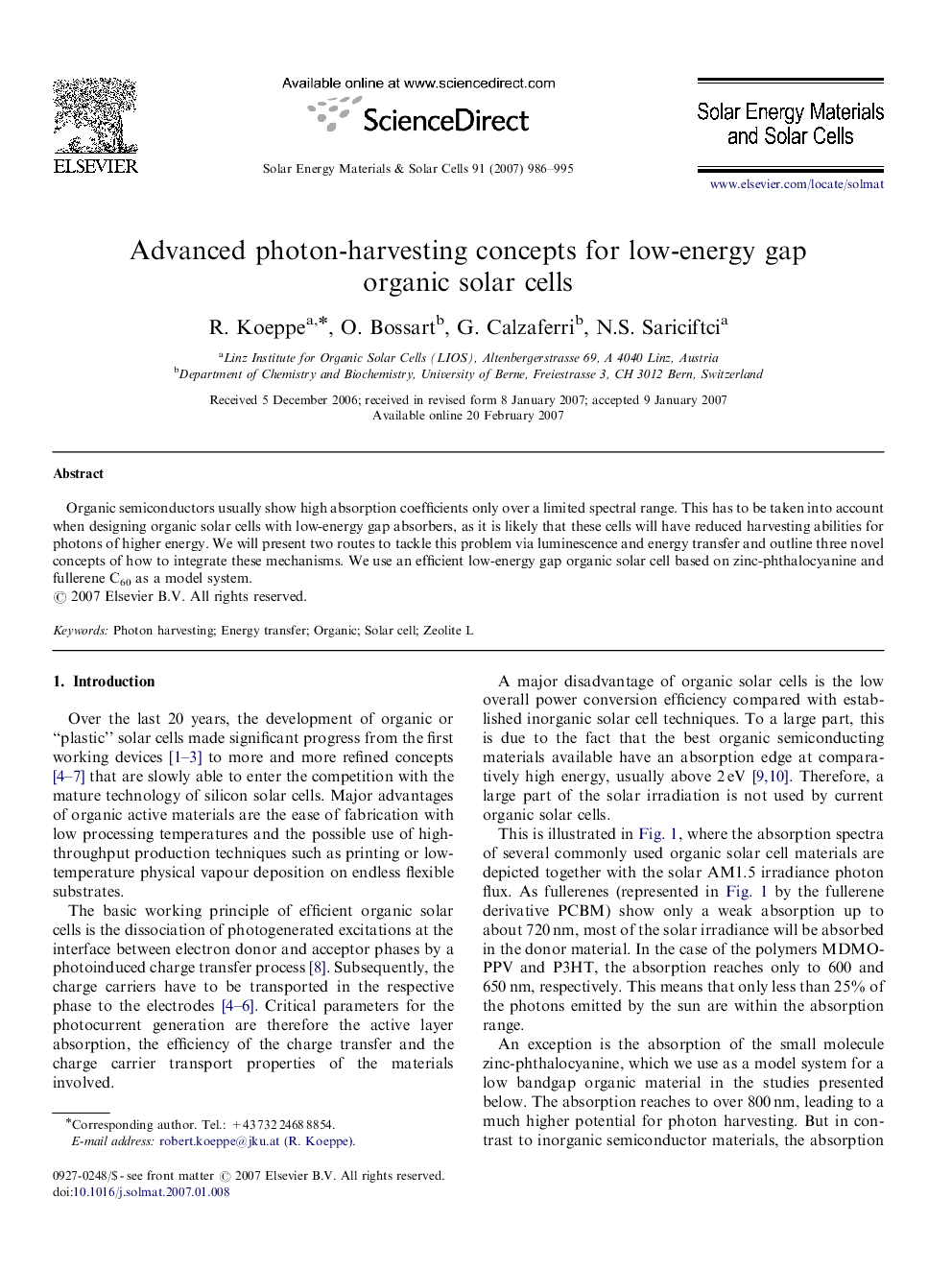| Article ID | Journal | Published Year | Pages | File Type |
|---|---|---|---|---|
| 81145 | Solar Energy Materials and Solar Cells | 2007 | 10 Pages |
Abstract
Organic semiconductors usually show high absorption coefficients only over a limited spectral range. This has to be taken into account when designing organic solar cells with low-energy gap absorbers, as it is likely that these cells will have reduced harvesting abilities for photons of higher energy. We will present two routes to tackle this problem via luminescence and energy transfer and outline three novel concepts of how to integrate these mechanisms. We use an efficient low-energy gap organic solar cell based on zinc-phthalocyanine and fullerene C60 as a model system.
Related Topics
Physical Sciences and Engineering
Chemical Engineering
Catalysis
Authors
R. Koeppe, O. Bossart, G. Calzaferri, N.S. Sariciftci,
